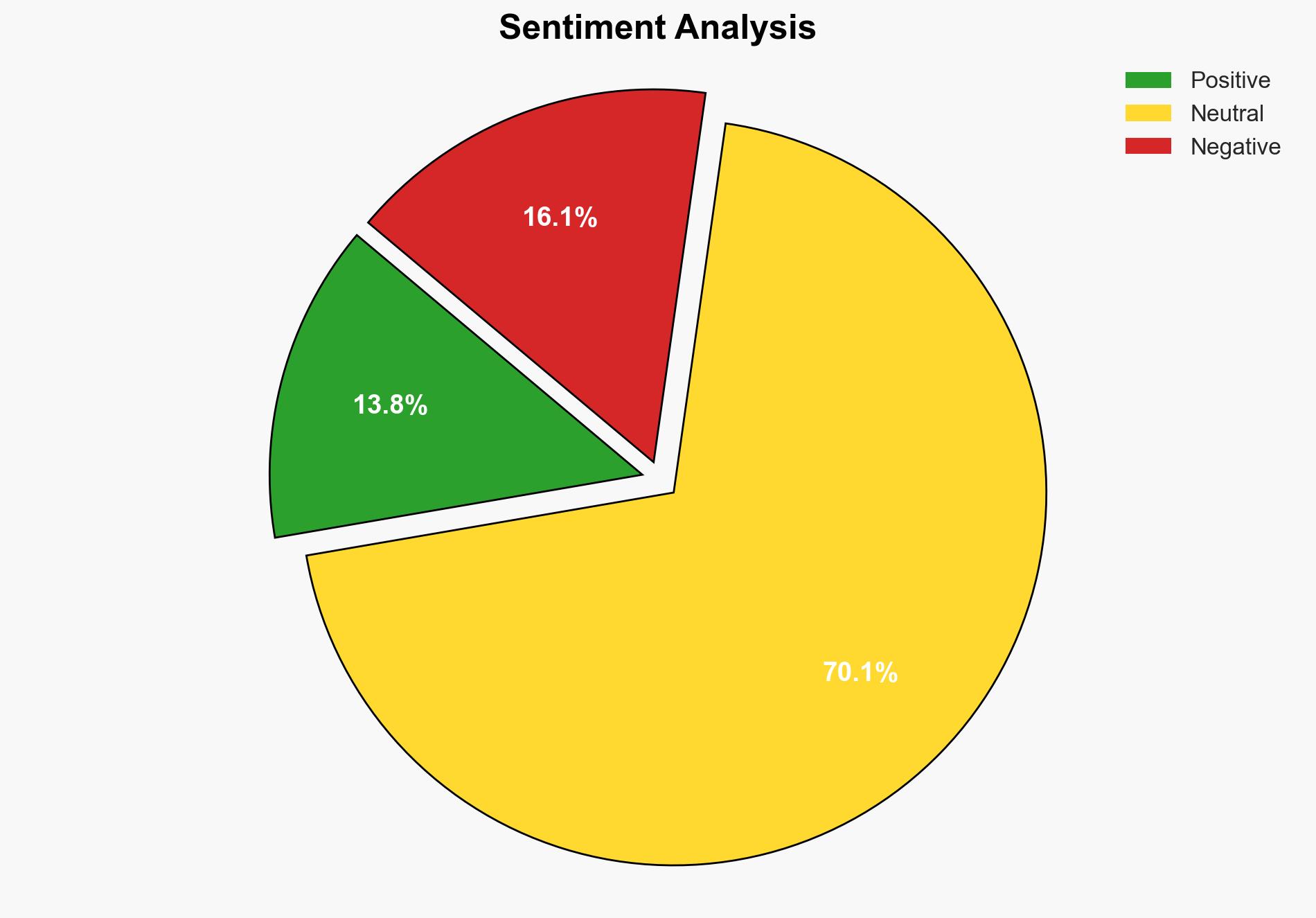Cisco smart licensing system sees critical security flaws exploited – TechRadar
Published on: 2025-03-21
Intelligence Report: Cisco Smart Licensing System Sees Critical Security Flaws Exploited – TechRadar
1. BLUF (Bottom Line Up Front)
Recent vulnerabilities in the Cisco Smart Licensing System have been identified and exploited, posing significant security risks. The flaws involve hardcoded administrative credentials, allowing unauthorized access. Immediate patching and security updates are recommended to mitigate potential threats. Stakeholders must prioritize securing exposed systems to prevent exploitation.
2. Detailed Analysis
The following structured analytic techniques have been applied for this analysis:
General Analysis
The Cisco Smart Licensing Utility (CSLU) has been found to contain a critical security flaw involving hardcoded administrative credentials. This vulnerability allows threat actors to remotely access the system via its API. The flaw was disclosed by security researchers, prompting Cisco to release a patch. Despite the patch, the vulnerability’s presence in internet-exposed instances of CSLU remains a concern. The flaw’s exploitation in the wild underscores the need for immediate action by affected organizations.
3. Implications and Strategic Risks
The exploitation of this vulnerability presents several strategic risks:
- Potential for unauthorized access to sensitive data and systems, impacting national security and organizational integrity.
- Increased risk of cyberattacks targeting exposed CSLU instances, potentially leading to widespread disruptions.
- Economic implications due to potential data breaches and associated regulatory fines.
The vulnerability highlights the ongoing challenge of securing software systems against evolving cyber threats.
4. Recommendations and Outlook
Recommendations:
- Organizations should immediately apply the latest Cisco patch to address the identified vulnerability.
- Conduct regular security audits and implement robust monitoring systems to detect unauthorized access attempts.
- Enhance cybersecurity training for personnel to recognize and respond to potential threats effectively.
Outlook:
Best-case scenario: Organizations promptly apply patches, significantly reducing the risk of exploitation. Enhanced security measures prevent future vulnerabilities.
Worst-case scenario: Delayed patching leads to widespread exploitation, resulting in significant data breaches and financial losses.
Most likely scenario: A mixed response from organizations, with some promptly securing systems while others remain vulnerable, leading to isolated incidents of exploitation.
5. Key Individuals and Entities
The report mentions significant individuals and organizations:
- Johanne Ullrich: Noted the potential for threat actors to target exposed CSLU instances.
- Nicholas Starke: Published details on the vulnerability shortly after Cisco’s advisory.
- Sead: Provided commentary on the broader implications of the security flaw.
These individuals have contributed to the understanding and dissemination of information regarding the security flaw.





